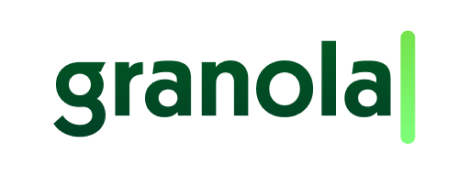In 2016, Stax launched in Melbourne, Australia, to make life easier for companies looking to get started in the cloud. Stax focuses on cloud automation and management for businesses using the Amazon Web Services (AWS) platform, and was spun off from Versent Group, which builds cloud-native applications, platforms and services.
“Our mission at Stax is to see the delight in our customers’ eyes when they can build and achieve their cloud outcomes,” says James Coxon, Stax’s chief product officer and one of Versent’s founders.
When Versent was just a three-person company in 2014, the founders—Coxon, Eddie Smith and Thor Essman—were adamant about building the company on Slack. This ethos has remained even as Versent has grown to 360 employees. “We were not using email with Versent,” Coxon says. “Slack was our collaboration tool of choice. So when we branched out with Stax, we knew we’d spend all day, every day in Slack.”
Today, with about 50 employees across Perth, Amsterdam, Melbourne and Portugal, Stax uses Slack channels, digital spaces to share messages, tools and files, for everything from responding to customer issues to sharing pet photos. “A lot of meaty stuff happens in Slack, but we can also have fun,” Coxon says.

“Slack has to be a core part of your company toolbox if you want to do business these days. I don’t know what we’d do without it.”
Collaborating in their own time, across time zones
With people in various European, Australian and North American time zones, Stax project leaders need a central hub where work could move forward. Instead of working around the clock, trying to coordinate real-time conversations or worrying about who’s online when, developers trade ideas and provide direction for colleagues in Slack channels like #product and #marketing.
“Slack is asynchronous: People pop into channels and know that they might not hear back from someone for five hours, which is OK,” Coxon says. “It’s really useful to make sure we don’t miss anything.”
That connection is even more critical now that the Stax team is working remotely during the Covid-19 pandemic. Because employees were already using Slack to plot out new platform features, coach new employees and plan town halls, the pivot to working from home was seamless.
“Slack enables far better collaboration for anything we’re doing, whether it’s sharing documents or following up on projects,” Coxon says. “If we’re working on short-term projects, like planning a town hall or a workshop, we’ll set up channels with the prefix ‘TMP’ for temporary. We’ll capture that information, take the appropriate action, then archive the channel.”

Responding rapidly to customer issues with Slack integrations
The Stax developers who work hard to create integrations for the company’s AWS platform get equally excited about adding Slack integrations that support a rapid customer response. “If something happens in our platform, or someone raises a service ticket, we can see it and interact with it in Slack,” Coxon says.
Developers get tipped off to product issues through integrations with Slack APIs for Atlassian, PagerDuty, Pingdom and Box, so they can quickly answer customer questions and troubleshoot problems. Email integrations with Outlook and Gmail keep employees up to date on messages from customers—a vital tool, Coxon says, because people are much likelier to spend time in Slack rather than email. There’s even an integration with Stax itself, so developers can see when customers create new Stax widgets and workflows.
“The information that’s normally scattered across applications gets concentrated in the right place in Slack,” Coxon says. “The integrations become essential to how we work every day.”
“Slack is an API-rich extensible platform that can make you more efficient and make your work easier. On top of that, it’ll improve your customer satisfaction.”
Onboarding new employees (and sharing dog photos) in Slack channels
When new employees arrive at Stax, they visit channels like #new-starters,where they’ll find links to Confluence and Box with human resources forms and company policies. “Since we have a centralised place in Slack to help new employees get settled in and start working, onboarding is far easier than it usually is,” Coxon says.
To break the ice and get to know new colleagues quickly, the #officedogschannel plays an integral role.
“We ask new employees to add photos of their dogs to #officedogs, in addition to their profile pictures, names, titles and phone numbers,” Coxon says. “That way, everyone across our global footprint can see your face, know who you are, and enjoy a picture of your golden retriever chewing on a plant.”
Fostering an open culture with searchable conversations
Slack is part and parcel of Stax’s open and transparent culture. That includes encouraging employees to talk to each other in Slack channels instead of direct messages, so everything is out in the open and searchable.
“We don’t want important messages to get lost in interpersonal communication,” Coxon says. “If we’ve got something to say, let’s say it publicly and openly to promote a richer and more engaging culture.”
Not all of the open communication is about work: Much of it helps colleagues stay healthy and balanced at a time when regular check-ins are from a distance.
“Thor Essman, our CEO, gets on #company-announcements every week and says ‘Are you standing up from your desk? Are you getting out in the open air?’ ” Coxon says. “All those little messages—and even creating custom emojis—make sure we all get through this together. Slack has been ground zero for that.”















